
 |

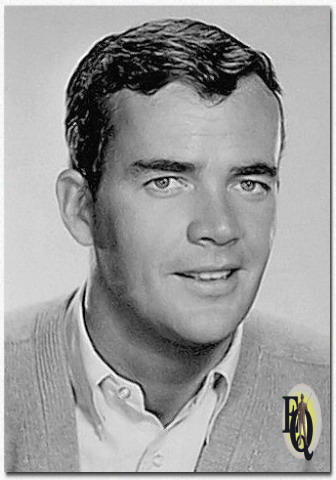
Click on top to return to List of Suspects
Click on bottom to return to
List of Suspects NBC

|
|
|
|
Height: 6' 4" - 6' 5" (1 m 93 - 1 m 96) Weight: 195 pounds Eyes: blue Partners: (1) Maryline Poole (Adams), teacher, book illustrator (married Dec 15. 1958 - 1963, divorced), Children: Heidi Tarquin Hutton (Sep 1959 - ) Timothy Tarquin Hutton, actor (Aug 16. 1960 - ) (2) Lynni M. Solomon (married Mar 30. 1970 - 1973, divorced), Child: Rebecca 'Punch', deputy fashion editor of Vanity Fair (1971-) (3) Yvette Vickers (intermittent relationship, 1964 - 1979) |
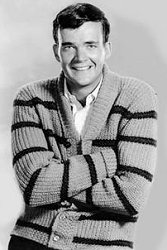 |
|
Dana Scott James Hutton was born on May 31. 1934 in Binghamton, New York as the son of Helen and Col. Thomas R. Hutton, an editor and managing editor of the Binghamton Press. His parents divorced while he was an infant. Jim recalled seeing his father only twice before his death, and moved to Albany, New York, in 1938. Hutton
was expelled from five high schools and a boarding school due to behavior
problems but had excellent grades and test scores. He earned money for
school by digging ditches on weekends and delivering bananas at night.
After starting his school newspaper's sports column, he earned a scholarship
in journalism from Syracuse University. There he lost his position in
the school of journalism (& scholarship) when after playing the part of
Pontius Pilatus in a school theatre production he was bitten by the acting
bug. He subsequently lost academic ambition and failed three classes as a
freshman. His intentions to continue academic pursuits soon came to an end. In college he stole Syracuse's bulldozer and plowed the blue tulip bed in front of the library (while drunk) the night before the moving up ceremony where he was one of the honorees as class vice-president and was immediately expelled, although argued that his co-conspirator was let off because he was captain of the football team. At Niagara College he claimed to have drained a pond as a prank and was expelled once again for dropping his pants during an awards dinner on a $12 bet, where he was being honored by the faculty as president of the Drama Society. He went on to pursue his career as an actor in Greenwich Village where he lived for almost a year, but when out of money and unable to pay his rent or buy food he joined the United States Army (1955). He was nearly demoted in rank for putting alum powder in his commanding officer's bowl of stew, among other pranks he pulled while in the military, almost all on higher-ups. He starred in over 40 Army training films before going to Berlin to serve in special service. Hutton personally founded the American Community Theater by spearheading the renovation of theaters abandoned during World War II. He established the first English-speaking theater in Berlin with the GI production of the play Harvey (which he starred in). Receiving high praise from officers including official commendation, his superior officer agreed to assign Hutton to manage the theater as part of his official duties and he produced, directed, and acted in five productions over two years, receiving the European Theater Award for Best GI Theater. He played the lead in an TV episode of The Big Attack - Combat Heroes of WWII, called "Big Slim" (aired Jan 1. 1956). But it was one of his earlier productions, The Caine Mutiny (1954), received the attention of director Douglas Sirk who promptly cast him in A Time to Love and A Time to Die (Universal, Jun 24. 1958). Using his entire military leave to film for 22 days, Universal was so impressed they offered him a contract, but he still had 18 months of service. "Maryline had been a lighting director for the off-Broadway theater, but by mutual consent it was decided there would be only one career in the family." Within five days of his military discharge, he had married and moved to Hollywood to pursue a career, but by then the offer was off the table from Universal. He eventually landed at MGM. In September 1959 his first daughter Heidi was born. On TV he starred in The Twilight Zone episode "And When the Sky Was Opened" (CBS, Dec 11. 1959) Three astronauts have returned from the first space flight. Jim plays Major William Gart, hospitalized with a broken leg, contacted by Colonel Clegg Forbes (an excellent Rod Taylor) which seems the only one to remember the existence of Colonel Ed Harrington. |
|
 Above left and right: The Twilight Zone episode "And When the Sky Was Opened" (CBS, Dec 11. 1959) Three astronauts have returned from the first space flight. Jim plays Major William Gart. |
|
|
At MGM he got a string of lighthearted comedies, the most popular being
Where the Boys Are (MGM, Dec 28. 1960) for which he gained
recognition with the youth population for his role.
This despite already being a 30 years old married father of two when he
played 20 year old college student TV Thompson. He came in third in 1960's Golden Laurel Awards Top Male New Personality, was named one of Motion Picture Herald's Stars of Tomorrow, was a Photoplay Favorite Male Newcomer nominee, and Screen World Award winner for Most Promising Personality. August 16. 1960 his son Timothy was born. |
|
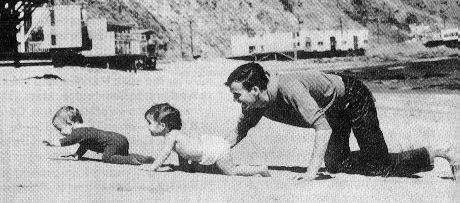 Above: Jim crawling on the beach with his one year old son Tim Tarquin (in front) and his sister Heidi Tarquin. Hutton was Scot on both sides and Tarquin (a Scottish hero) was a family name. |
|
| Perhaps MGM had plans to turn Hutton into the new Jimmy Stewart, for the studio insisted upon casting their young star in roles calling for ingenuous clumsiness. Hutton was romantically paired with Paula Prentiss in 4 consecutive films: Where the Boys Are (MGM, Dec 28. 1960), The Honeymoon Machine (MGM, July 10. 1961), Bachelor in Paradise (MGM, Nov 1. 1961) and The Horizontal Lieutenant (MGM, Apr 18. 1962). In the latter he got perhaps his most quintessential role, in which his constant bumbling eventually transforms him into a war hero. | |
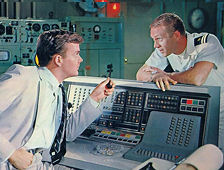
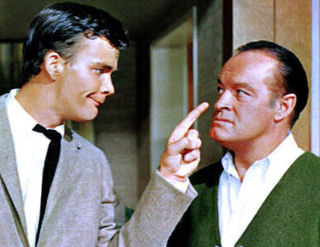 Above left: In The Honeymoon Machine (MGM, Jul 10. 1961) Jim plays opposite Steve McQueen. Above right: Jim Hutton and Bob Hope in Bachelor in Paradise (MGM, Nov 1. 1961). |
|
|
They worked so well together that
many fans assumed Hutton and Prentiss were married when in fact she was the
longtime wife to Richard Benjamin. According to Prentiss they were
paired because they were at the time Hollywood's tallest contract players
(he at 6' 5" and she at 5' 10").
But despite their likable personalities and on screen chemistry, none of the
films captured the magic of the first film. Frustrated, Hutton campaigned
for the lead opposite Jane Fonda in George Roy Hill's
Period Of Adjustment
(MGM, Oct 31. 1962) and then refused jobs for 15
months until MGM agreed to give him better roles or dissolve their exclusive
contract. Director Richard L. Bare attempted to cast Hutton in several TV series, including additional Twilight Zone episodes, but he couldn't convince MGM to change his exclusive film contract. While developing the romantic comedy sitcom You're Only Young Once (CBS, Sep 11. 1962) he felt Hutton was the only working actor right for the role. He asked Hutton to appear in the screen tests with actresses in order to show the studio the dailies and allow him to take the role. They agreed to allow Hutton to appear in the pilot, but refused to break his contract to work on a TV series full time. |
|
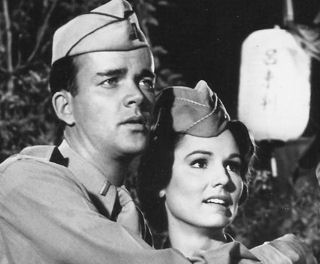
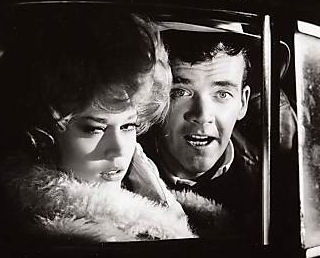 Above left: Jim Hutton and Paula Prentiss in The Horizontal Lieutenant (MGM, Apr 18. 1962). Above right: With Jane Fonda in George Roy Hill's Period Of Adjustment (MGM, Oct 31. 1962). |
|
|
Whilst waiting for a next assignment Jim starred in a stage production
of Burlesque at UCLA. He still hankered for a bit of live
theater but said he'll get that out of his system with an occasional
fling in summer stock or something like this UCLA deal. On December 1. 1962, Jim asked for a divorce. They had been married for slightly less than four years. They both wanted a lot of children quickly. Heidi and Timothy were to be the first of six. Only a miscarriage prevented them from having a third child. "Overnight stardom has a lot to do with ruining character," said Maryline Hutton bitterly. When Hutton returned home—to toys, noise, and crying children—he hated himself for getting angry at this. Hutton said "his wife and family were standing in the way of his career." In a few months, the divorce was final. Hutton frequently stayed at Marilyn's home when visiting the family. Jim "had a ball" during his first month of freedom but found it less enjoyable afterward. He resented the necessary caution of checking if his dates were out to blackmail a movie star. He lived with Susan Oliver throughout 1963 but they refused to marry after his divorce and parted when she began focusing on her career as a pilot. Introduced in 1964 Hutton had an on again, off again relationship with actress Yvette Vickers for 15 years, often rumored to be engaged and/or living together by tabloids. Vickers said he refused to marry her because of his inability to remain faithful to women. Between both of their second marriages they rekindled their romances. Vickers claimed the equally troubled Hutton had been the one and only love of her life & soul-mate and described him as "a typical Irish Catholic male; hard drinking, chauvinistic, funny as hell, but with the insecurities of a child." |
|
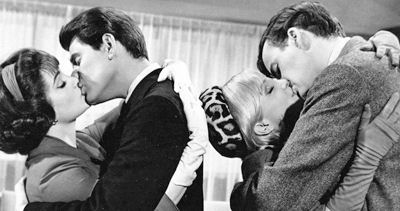
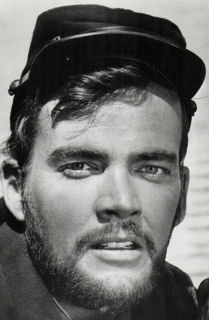 Above left: Woman kissing Joby Baker while Susan Oliver and Jim Hutton do the same in Looking For Love (MGM, Aug 5. 1964). Above right: Jim Hutton as Lieutenant Graham in Major Dundee (Columbia, Mar 16. 1965). |
|
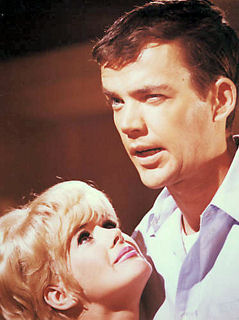
 Above left: Jim Hutton with an adoring Connie Stevens in Never Too Late (Warner Bros., Nov 4. 1965). Above right: Walk, Don't Run (Columbia, Jun 29. 1966). Cary Grant plays matchmaker for Jim and Samantha Eggar. |
|
|
He played opposite Hollywood greats as Burt Lancaster in The Hallelujah Trail (United
Artists, Jun 23. 1965) but the next big break
for Jim Hutton was the film Walk, Don't Run
(Columbia, Jun 29. 1966). Cary Grant plays
matchmaker for Jim and Samantha Eggar during the 1966 Olympics in Tokyo
(Above right). Although Hutton was allowed a few non-comedy "outdoors" roles in Major Dundee (Columbia, Mar 16. 1965) and The Green Berets (Warner Bros., Jun 19. 1969), for the most part he was locked into playing gangling young goofs. Jim Hutton starred in nearly a dozen TV movies. However, when all three of his 1965 releases flopped at the box-office his Hollywood stock took a major tumble, particularly when Gene Kelly dropped him from the lead in of A Guide for the Married Man (20th Century Fox, Apr 28. 1967) one month before production started. On December 18. 1967, a newspaper reported that Jim Hutton and Kathe Jennifer Green, daughter of composer Johnny Green, would be married in two weeks at London's Westminster Abbey. He had proposed to Kathe at St. John’s Hospital in Santa Monica, where she was scheduled to undergo an appendectomy that day. A spokesman for the couple said they’d known each other for seven years but had their first date only four weeks ago. Miss Green’s father was in London writing the score for the film Oliver. By the end of January, the same newspaper reported that Jim had flown to London for a meeting with Kathe's father, and it looked like the marriage was off. Jim returned to Hollywood for a film commitment. |
|
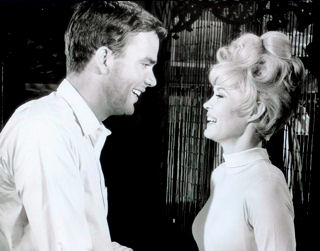
 Above left: Jim Hutton and Dorothy Provine in Who's minding the mint? (Columbia, Sep 26. 1967). Above right: Jim Hutton as Greg Parker, the right hand of Chance Buckman (John Wayne) in Hellfighters (Universal, Nov 27. 1968). |
|
|
Film roles dried up and he was relegated to TV work, which coincided with what he called an eight year depression. He did marry Lynni M. Solomon on March 30. 1970, and although they had a daughter Rebecca in 1971 the marriage would last only three years ending in divorce. "Much of my career downfall was my own fault," he admitted. "And it took two failures at marriage to convince me that I'm a bachelor. I like living with a woman - but it's a mistake for me to marry." When finally, in the mid-1970s, he snagged the
television role for which his screen persona worked quite well: Ellery Queen.
Once he got it, he directed all his energies toward making his
characterization exceptional. Hutton refused to view the films of
Lee
Bowman, George Nader, or
Ralph Bellamy as "Ellery Queen"
- not wishing to be influenced by their performances. Hutton spent two
days at Los Angeles' main library researching the famous fictional
detective and the two men who created him. These studies left him
convinced that "Ellery Queen," as written, was a
patronizing know-it-all, completely without personal warmth or a sense
of humor. "That's when I decided to change the character around and
make him more human. To do that, I added dimensions not in the books."
Without them, Hutton believed he would lose the audience before the
first commercial. |
|
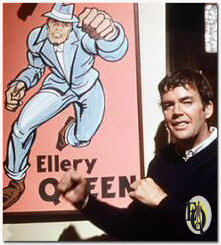 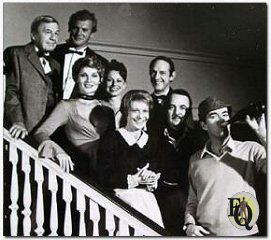 Above left: Jim Hutton in a publicity photo the Ellery Queen episode "The Adventure of the Comic Crusader". (NBC, Oct 2. 1975). Above right: Pictured are David Wayne, Tab Hunter, Susan Stafford, Rosanna Huffman, William Schallert, Signe Hasso, John Hillerman and Jim Hutton during the Ellery Queen episode "The Adventure Of The Black Falcon". (NBC, Jan 4. 1976). |
|
|
Surely this became the 'definite' Ellery Queen due to his likable impersonation in the NBC-TV series. The actor was charming and convincing as the self-effacing, deceptively preoccupied criminologist, especially when he turned to the camera 45 minutes into each Ellery Queen episode and invited the folks at home to help him solve the mystery. According to producer William Link, Ellery Queen was created with Hutton in mind after NBC saw his performance in the TV movie They Call It Murder (NBC, Dec 17. 1971). Link described him as the most dedicated actor he'd ever worked with. He recalled that Hutton literally moved into his dressing room during the 7-month production, 7 days a week. He did this in order to study his script in the morning and night and avoid all distractions at the home of women and alcohol. But the crew noticed he drank heavily after production wrapped Friday throughout Saturday. |
|
|
This success coincided with an upturn of theater work and reunion with Timothy Hutton (15). Father and son had gotten reacquainted in the summer of 1975, when, at Jim’s suggestion, Timothy spent the summer in his dad’s Laurel Canyon home while Jim was shooting a TV series. “Then he asked me, ‘Do you want to come down to Los Angeles and stay with me?'” Tim says, “The idea of actually living together hadn’t crossed my mind, but when he suggested it and we talked about it, the pieces all fit. The timing was perfect. When I suggested it to my mother, she thought it was a wonderful idea as well.” (3) One of Hutton's memorable television appearances was appearing as a guest star in the 1977 - 1978 third season premiere of the Norman Lear sitcom One Day At A Time. The episode, entitled "The Older Man" (CBS, Sep 27. - Oct 18. 1977), was a four-part story arc in which Hutton portrayed Dr. Paul Curran, a forty-two year old veterinarian who falls in love with seventeen-year old Julie Cooper (played by Mackenzie Phillips). His last television role was in an unsold pilot called Butterflies based on the BBC2 sitcom. It was broadcast on NBC on August 1. 1979 two months weeks after Hutton had died. (2) According to Tim, his father loved his profession, and
that love was his legacy to his son. Father and son also shared passions for
horse racing, poker, jazz, and tennis. The day after one of their tennis
games, Jim Hutton visited his doctor for respiratory trouble and back pain,
he was diagnosed with liver cancer, which had spread to his lungs. Yvette and Jim Hutton’s somewhat erratic union was once again challenged by the tragic news that he had terminal lung cancer. “What made it even worse is that he had found out about it during one of the times when we had drifted apart. He finally called me from the hospital. Jimmy was talking about wanting us to be together again in Malibu, walking on the beach at dusk and watching the sun go down into the ocean. He was later released, and we did get to do it, but then Jimmy’s health took a turn for the worse and he had to go back into the hospital." Hoping to prolong his life with chemotherapy, he died 8
weeks after first checking into the hospital and only 4 weeks after his
condition was made public.
"The biggest shock was that he was dying so quickly," |
|
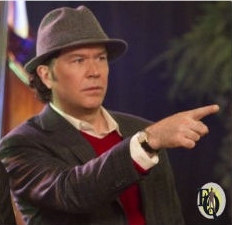 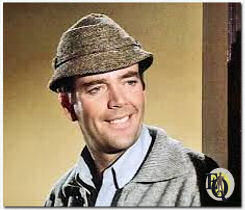 |
|
|
Timothy Hutton wore Jim Hutton's hat from Ellery Queen (1975 - 1976) in both Ordinary People (Paramount, Sep 19. 1980), A Nero Wolfe Mystery (AE Networks, 2000 - 2001) and in the Leverage TV series in the episode "The 10 Li'l Grifters Job" (TNT, Jul 7. 2011) where a Murder Mystery Masquerade offered the opportunity for a tribute (left). Youngest daughter Rebecca 'Punch' Hutton, from his second marriage, named her daughter Ellery. “Friends” is always the word Tim uses to describe his
relationship with his father, and it is a word he insists not be taken
lightly. |
|
|
Notes: All dates for movies are for the first US release. All dates for TV programs are original first airdates. All dates for (radio) plays are for the time span the actor was involved. Facts in red still need confirmation. |
|
|
Click on Uncle Sam if you think you can help out...!
|
|
|
Other references
Additional video & audio sources
|
|
|
This actor profile is a part of
Ellery Queen a website on deduction.
The actor above played Ellery Queen
in TV series in 1975-1976. Click Uncle Sam if
you think you can help out...! Many of the profiles on this site have been compiled after very careful research of various sources. Please quote and cite ethically! |
|
|
Page first published on July 27. 2016 Version x2.1 - Last updated April 22. 2025 |
|
 b a c k
t o L i s t o f S u s p
e c t s
b a c k
t o L i s t o f S u s p
e c t s
b a c k
t o L i s t o f S u s p
e c t s N B C
|
|
| Introduction | Floor Plan | Q.B.I. |
List of Suspects | Whodunit? | Q.E.D. | Kill as directed | New | Copyright Copyright © MCMXCIX-MMXXV Ellery Queen, a website on deduction. All rights reserved. |